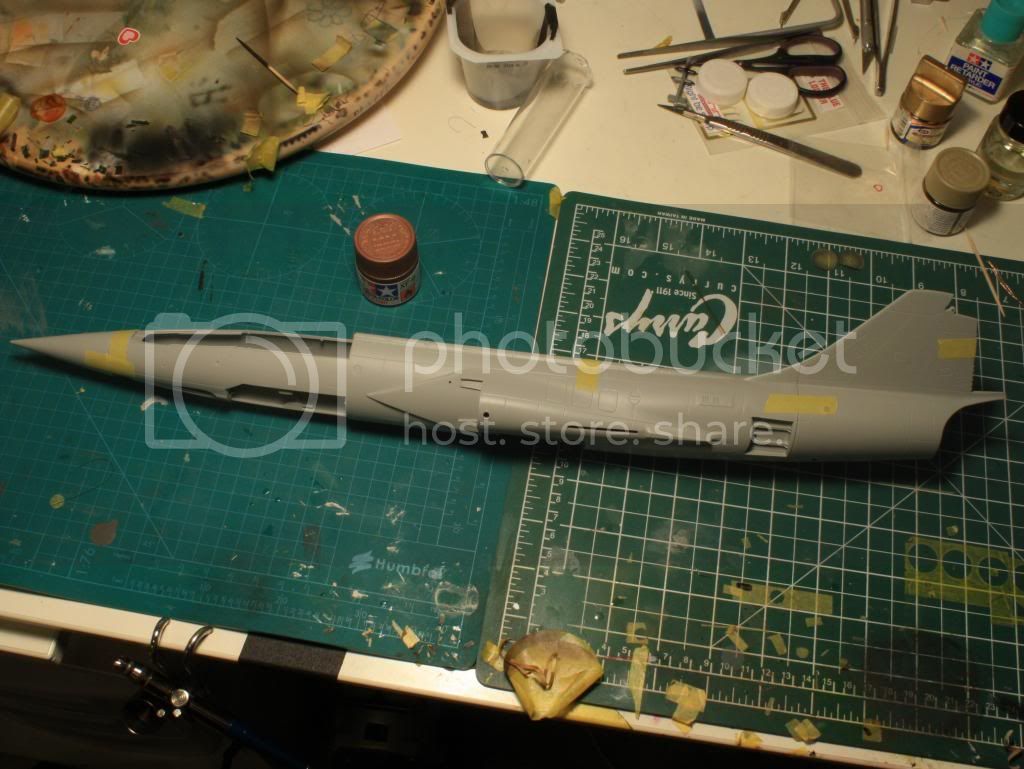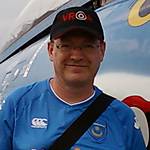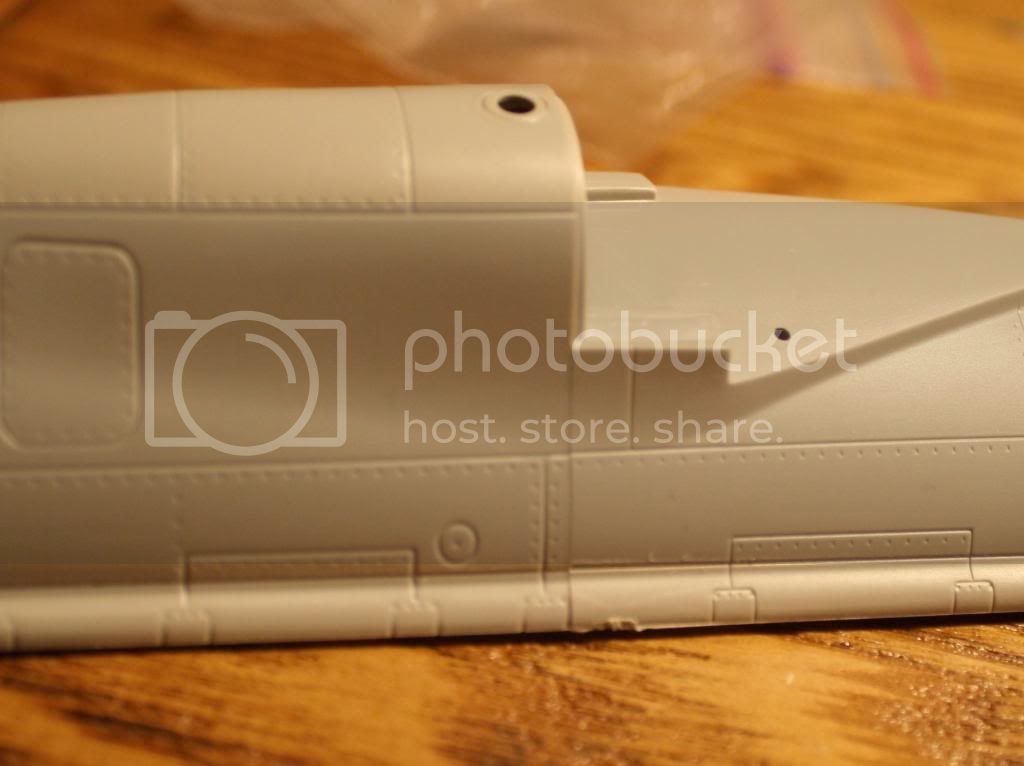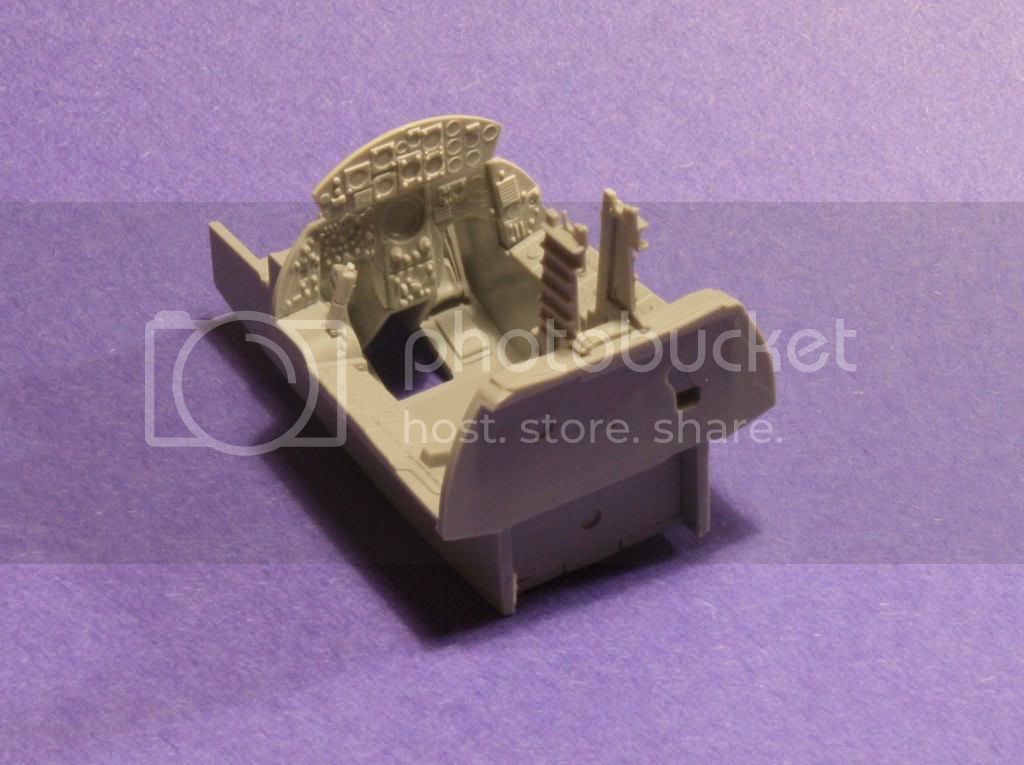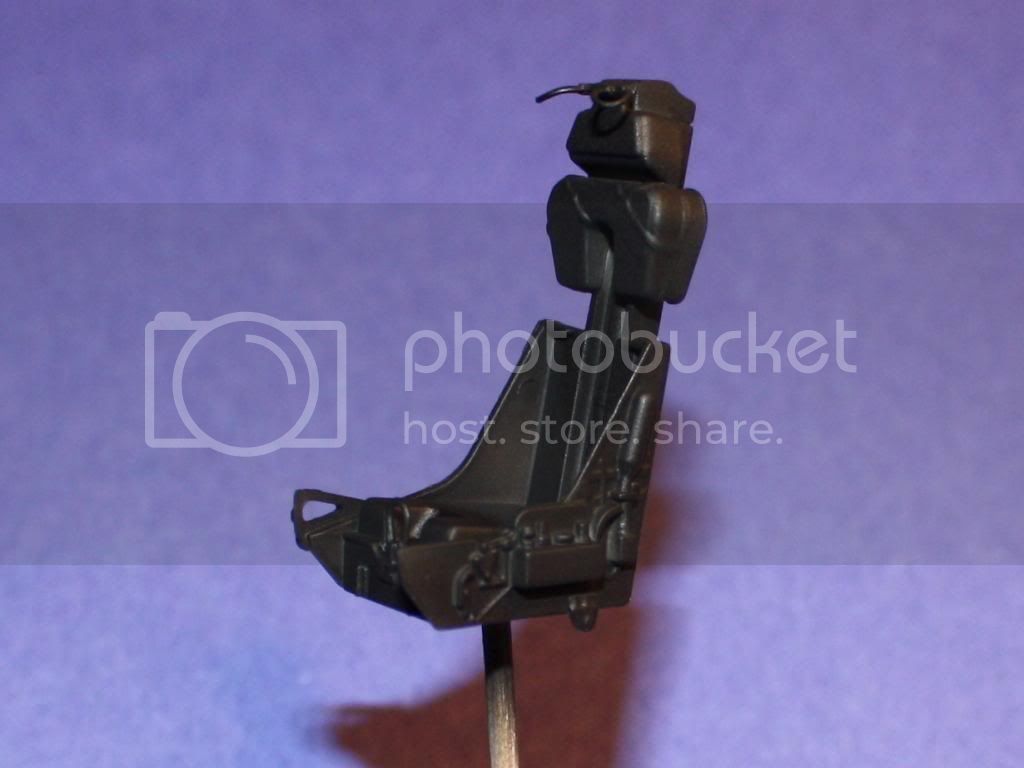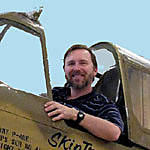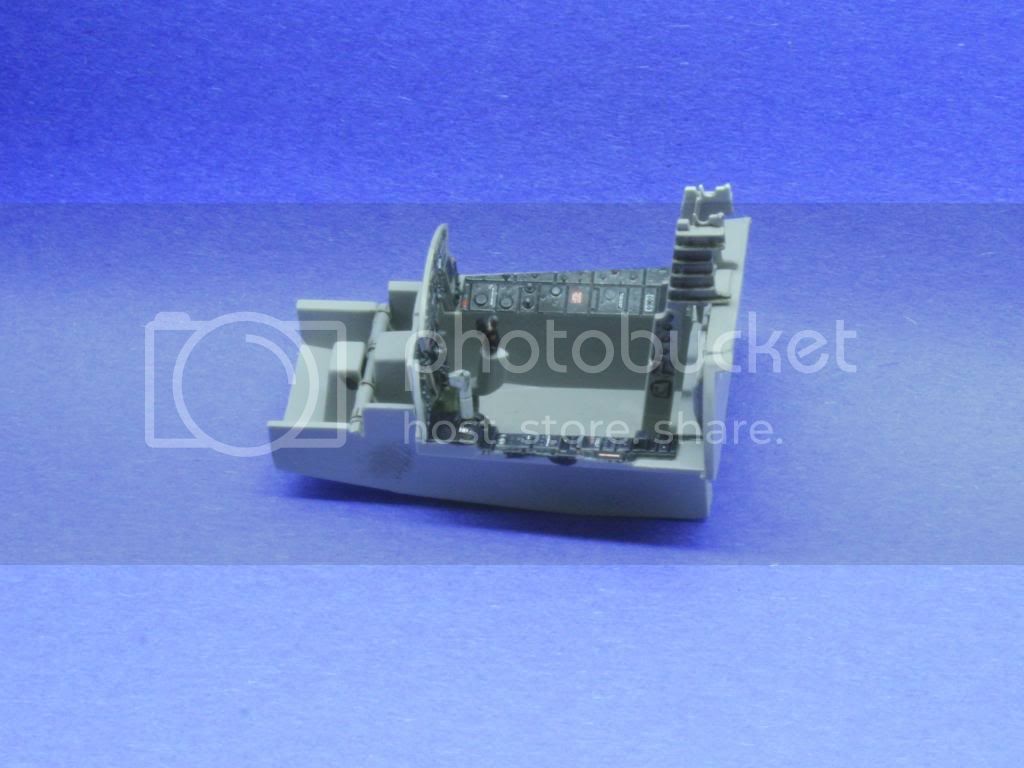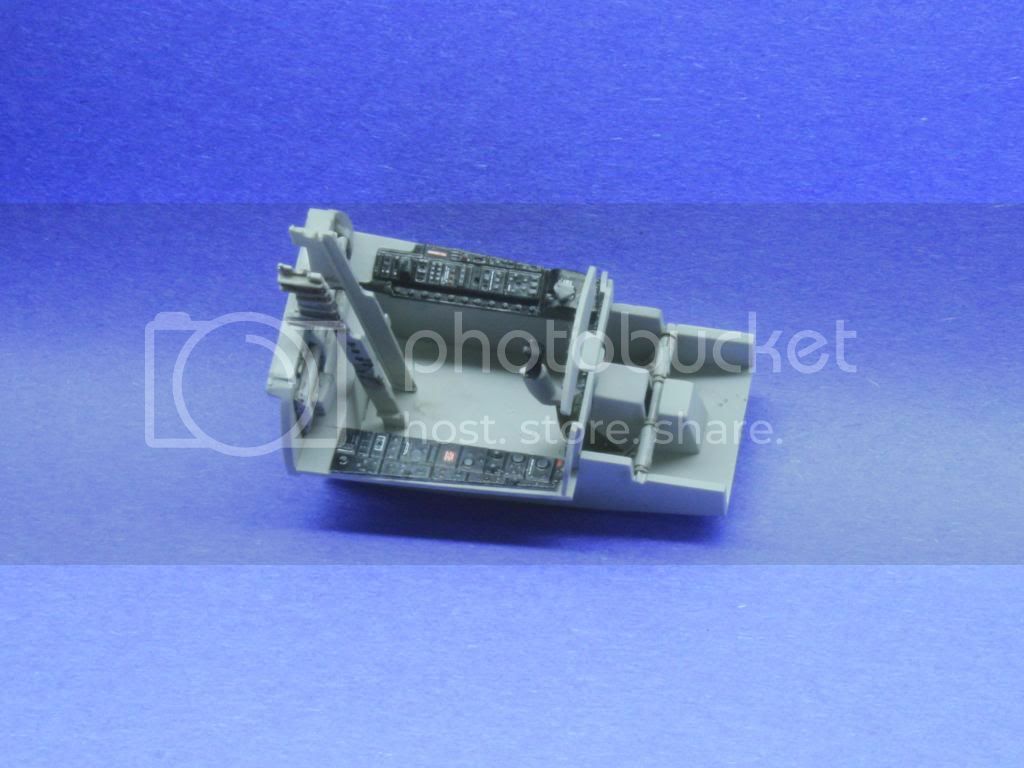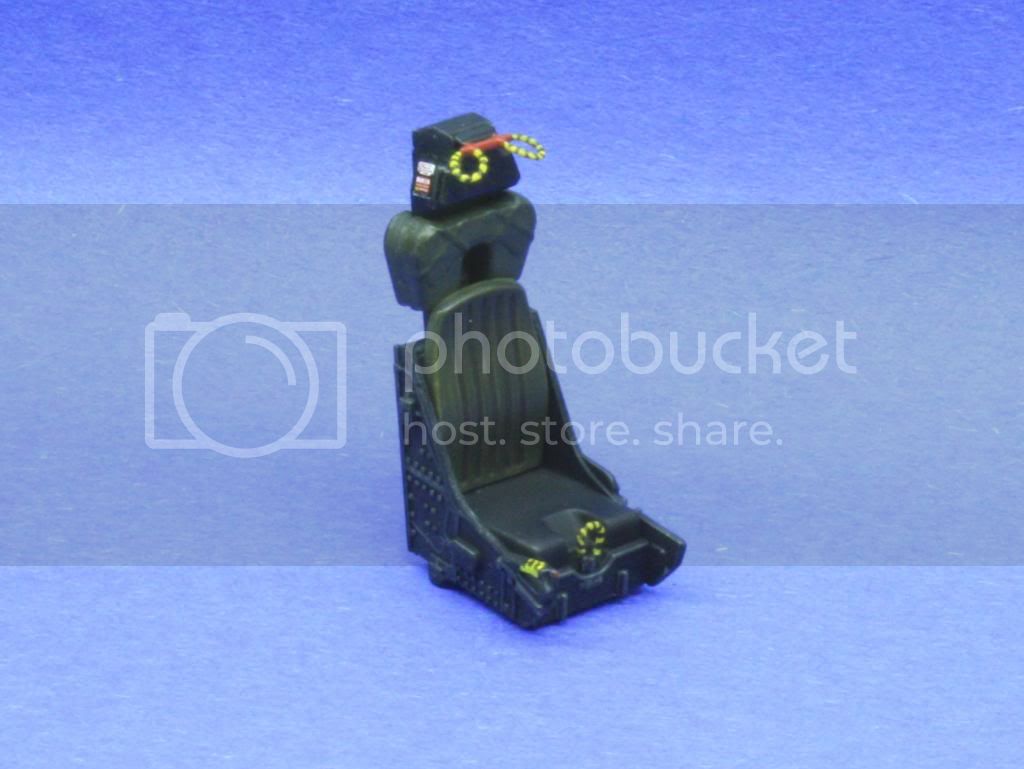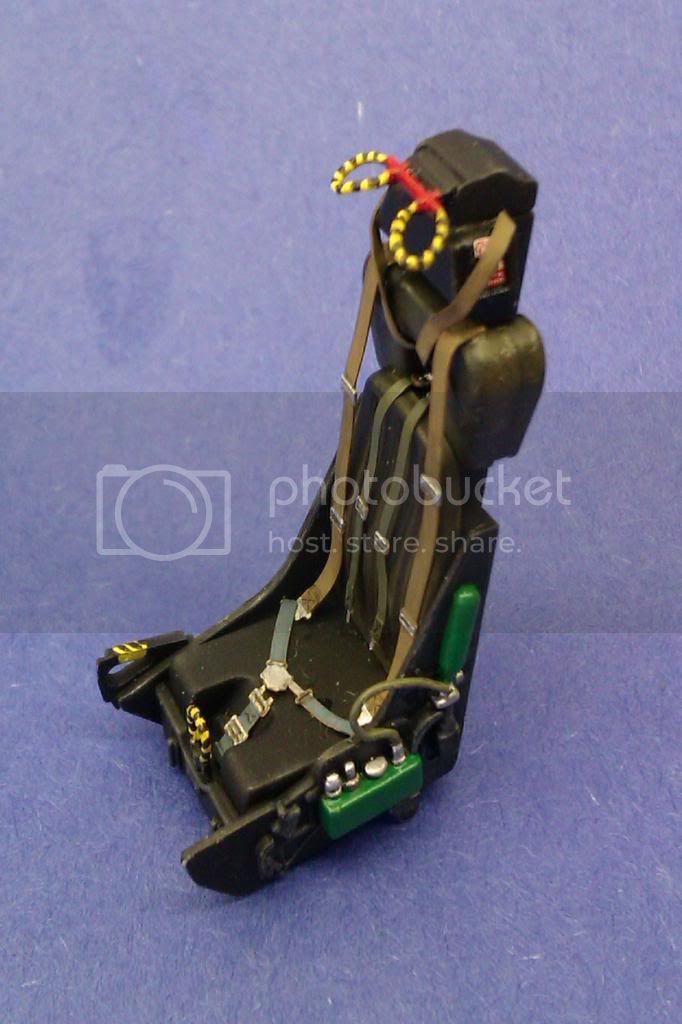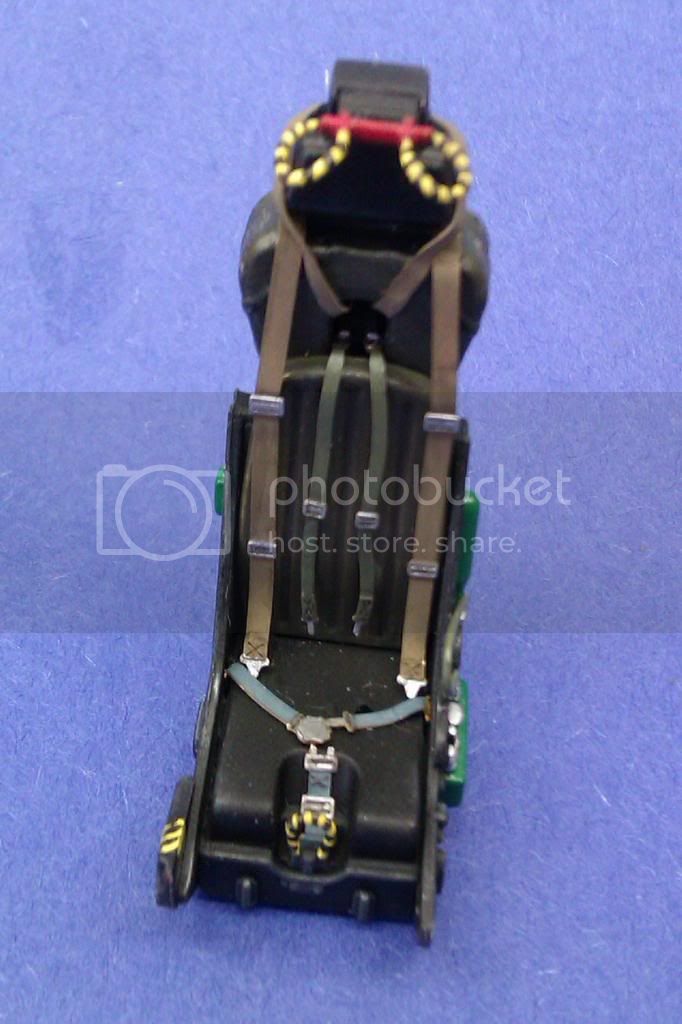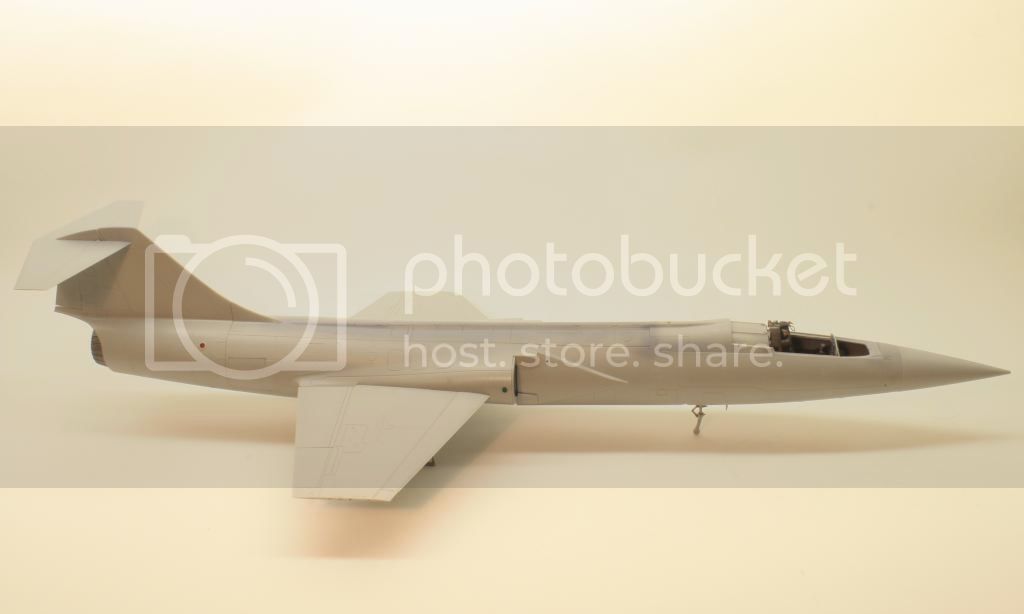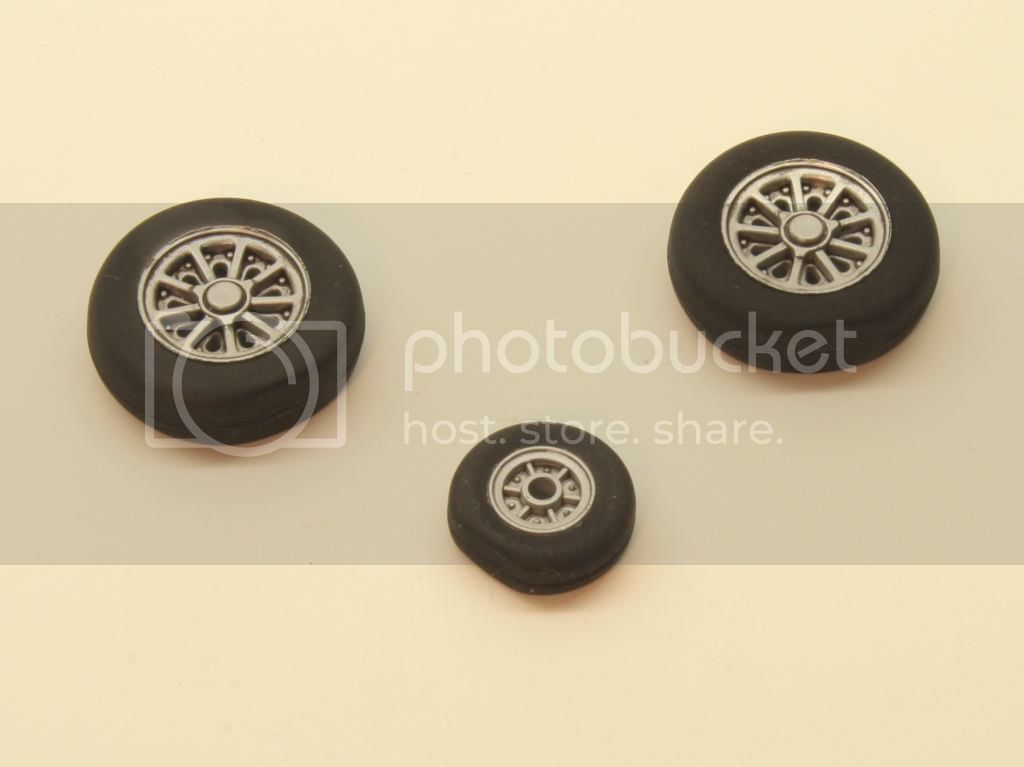Apologies for the lack of an update. This doesn't mean I have been idle though, it's just that most of the work that has been done on the kit recently, has been about dealing with seams, rescribing detail and sanding and polishing, not the most riveting (pardon the pun) subjects for most modellers. The fuselage is together and it has been nice to get an idea of the size and sleek lines of the model.

What hasn't been nice has been the work needed to get the surface detail a bit more consistent. The detail on this kit really is a mixed bag, exquisitely sharp in some areas but soft and mushy in others. I already spoke about the mismatch between fuselage halves and this is very apparent when you marry the two together. The F104 has an abundance of small inspection panels on the spine, which straddle the centre line seam. These all had to be rescribed on the port side, to match the consistency of the starboard side. In places, the detail disappeared altogether. I used a pin chucked in (what else!) a pin vice to replace rivets and my trusty UMM scriber to do the initial pass followed up by the RB productions tool. After polishing the seam, I brushed a little Tamiya extra thin into each rescribed line and shot some primer along its length to check for discrepencies. I made the decision to close up the avionics bays and speed brakes as more detail is required here and I don't have the references to do it justice. I will open up the cannon bay though as I have a couple of fairly good photos of this area.
As the engine is not going to be displayed, the only part of it which needed painting, was the nozzle. This was sprayed with Gunze Burnt Iron and dry brushed with silver enamel. A Mig Productions Dark Wash was then applied before attaching it and the tail section to the main fuselage.

I recently received the gear legs back from Ernie Gee who is in the process of developing some brass replacements and assembled and test fitted these after adding some hydraulic lines from fuse wire and painting with Alclad.
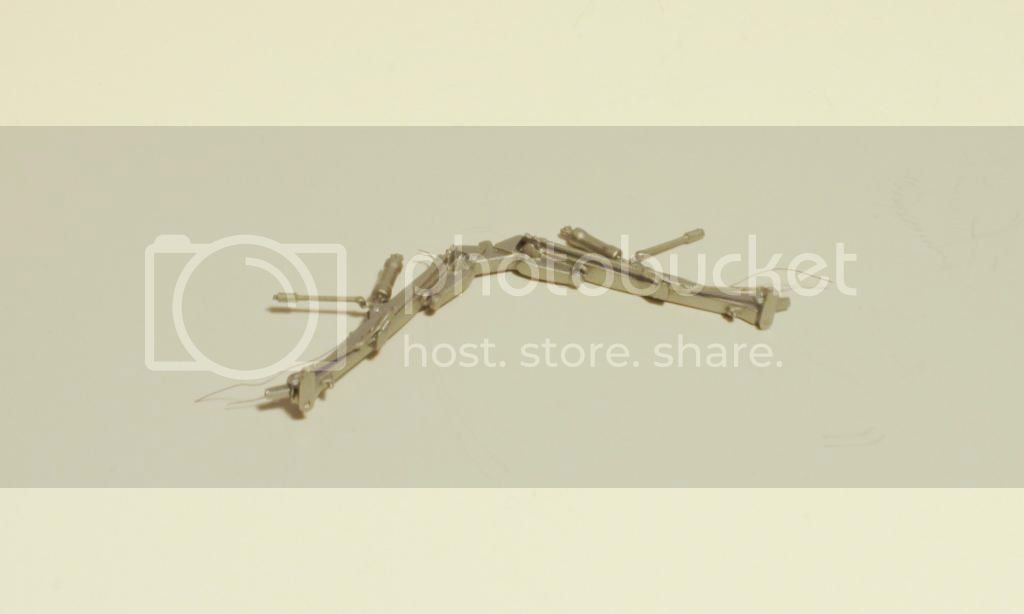
Balancing the model on the main gear proved that this would be a tail sitter, so ballast was added to the nose cone by means of fishing weights epoxied in place.
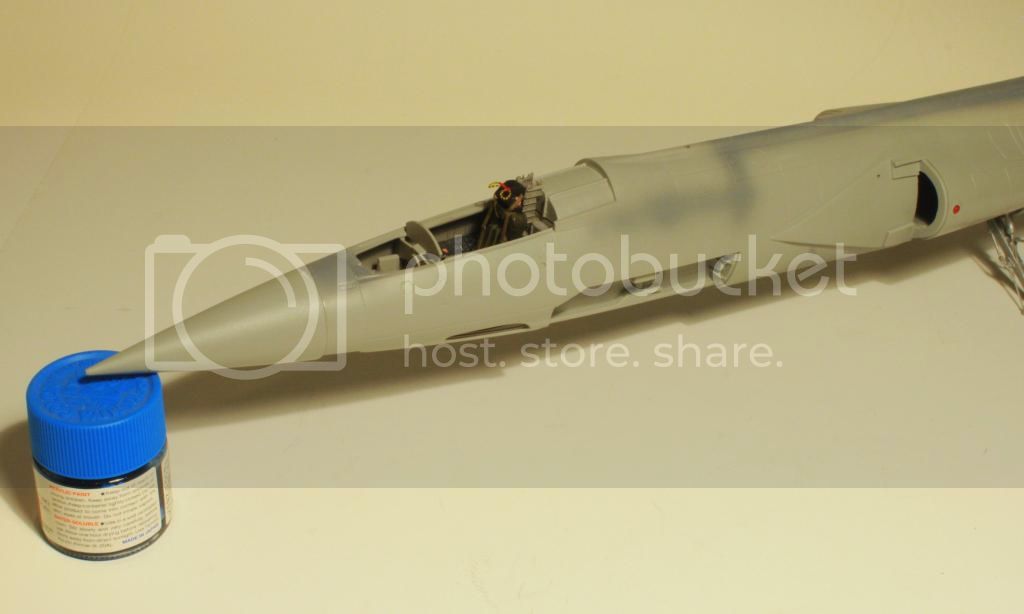
Despite my grumblings about the kit, it's begining to look very much the part and I am looking forward to getting some war paint on very soon.
